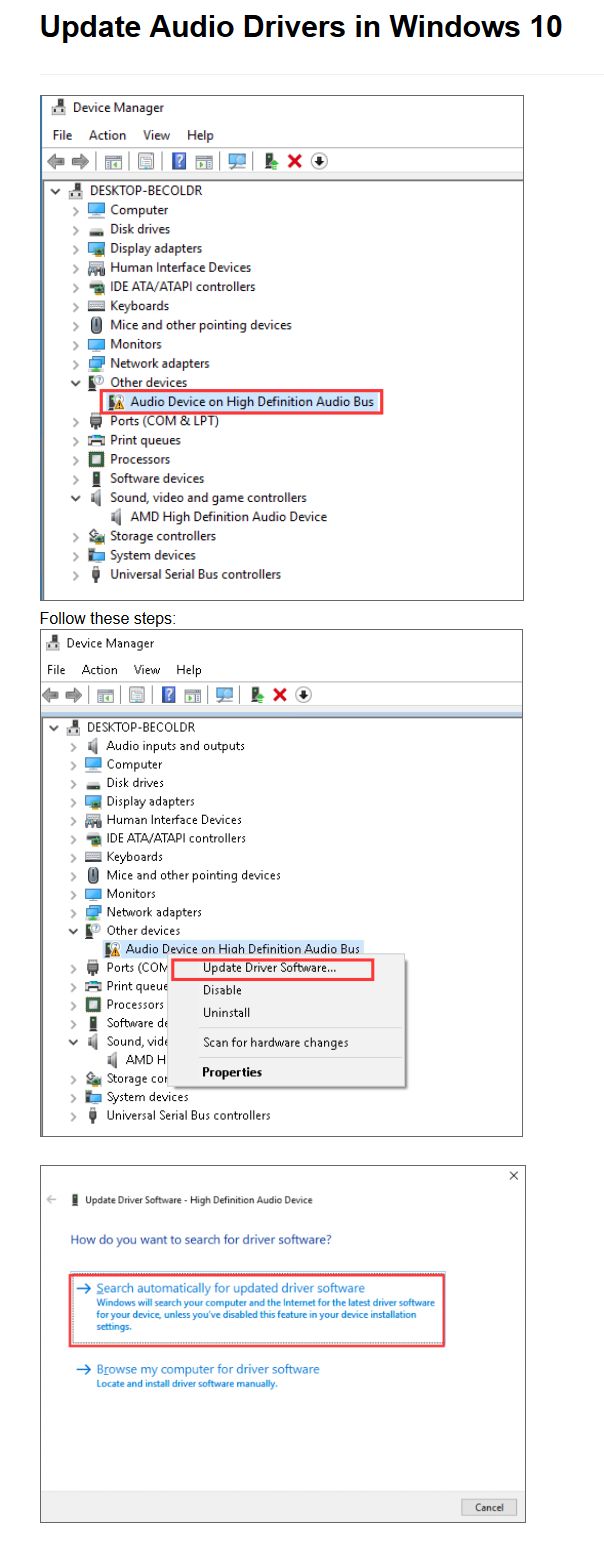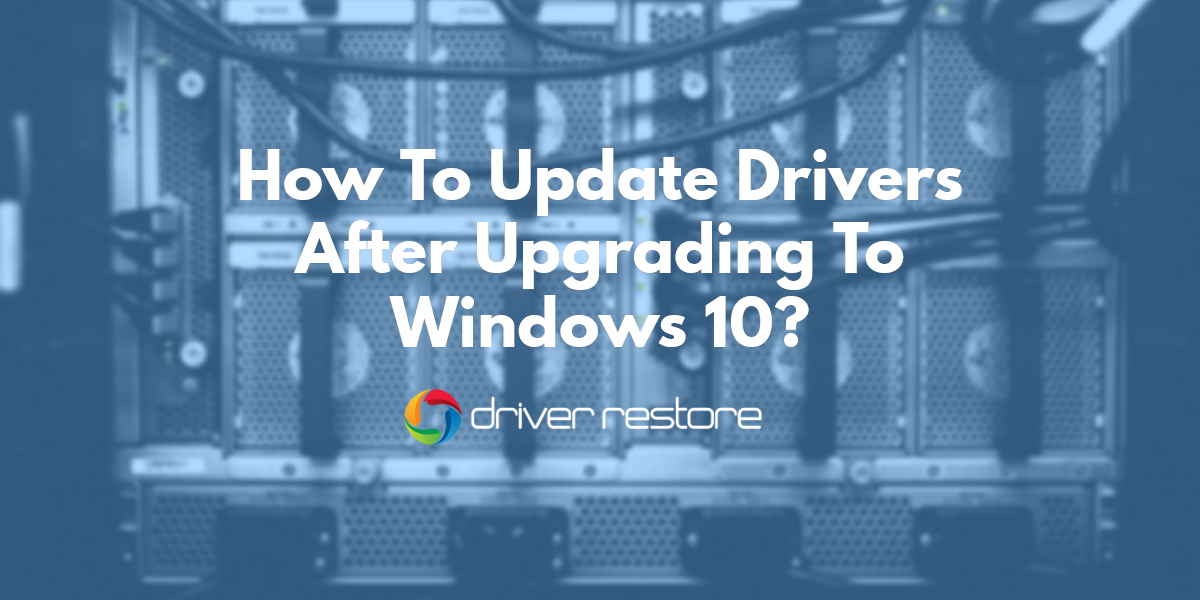Driver Restore Update Windows 10
- Driver Restore Update Windows 10 Windows 7
- Driver Restore Update Windows 10
- Driver Restore Update Windows 10 Download
This list of free Driver Update Software for Windows 10/8/7 will let you update device drivers easily without any difficulty. For Windows 10/8/7 will let you update device drivers easily.
Windows 10 automatically installs updates in the background. Most of the time, this is good, but sometimes you’ll get an update that breaks things. In that case, you’ll need to uninstall that particular update.
Windows 10 is more aggressive about updating than previous versions. For the most part, this is good, since way too many people never bothered installing updates—even critical security updates. Still, there are lots of PCs and configurations out there, and an occasional updated that messes up your system can slip through. There are a couple of ways you can prevent bad updates from ruining your day. You can prevent certain types of updates so they don’t download automatically. And, as of the Creators Update in Spring of 2017, you can easily pause or defer non-critical updates for a month or more while other users test them out.
Unfortunately, neither of these strategies helps if you’ve already downloaded and installed an update that broke something. This becomes even more difficult if that update is a major new Windows build, like the Fall Creators Update released in September, 2017. The good news is that Windows provides a way uninstall major build updates and the smaller, more typical, Windows updates.
Uninstall Major Build Updates
There are two different types of updates in Windows 10. Aside from traditional patches, Microsoft occasionally releases bigger “builds” of Windows 10. The first major update to Windows 10 released was the November Update in November 2015, which made it version 1511. The Fall Creators Update, which was released in September 2017, is version 1709.
After installing a major new build, Windows keeps the files necessary to uninstall the new build and revert to your previous one. The catch is that those files are only kept around for about a month. After 10 days, Windows automatically deletes the files, and you can no longer roll back to the previous version without doing a re-installation.
Driver Restore Update Windows 10 Windows 7
RELATED:How to Become a Windows Insider and Test New Windows 10 Features
Note: Rolling back a build also works if you’re part of the Windows Insider Program and you’re helping test new, unstable preview builds of Windows 10. If a build you install is too unstable, you can roll back to the one you were previously using.
To roll back a build, hit Windows+I to open the Settings app and then click the “Update & security” option.
On the “Update & security” screen, switch to the “Recovery” tab, and then click the “Get started” button under the “Go back to an earlier build” section.
If you don’t see the “Go back to an earlier build” section, then it’s been more than 10 days since you upgraded to the current build and Windows has cleared away those files. It’s also possible that you ran the Disk Cleanup tool and selected the “Previous Windows installation(s)” files for removal. Builds are treated practically like new versions of Windows, which is why you uninstall a build in the same way you’d uninstall Windows 10 and revert to Windows 8.1 or 7. You’d have to reinstall Windows 10 or restore your computer from a full-system backup to go back to a previous build after those 10 days are up.
Also, note that rolling back a build is not a way to opt out of future new builds permanently. Windows 10 will automatically download and install the next major build that’s released. If you’re using the stable version of Windows 10, that may be a few months away. If you’re using the Insider Preview builds, you’ll likely get a new build much sooner.
Uninstall Typical Windows Updates
You can also uninstall the regular, more minor updates that Microsoft consistently rolls out—just as you could in previous versions of Windows.
To do this, hit Windows+I to open the Settings app and then click the “Update & security” option.
On the “Update & security” screen, switch to the “Windows Update” tab, and then click the “Update history” link.
On the “View your update history” screen, click the “Uninstall updates” link.
Next, you’ll see the familiar interface for uninstalling programs showing a history of recent updates sorted by installation date. You can use the search box at the top-right corner of the window to search for a specific update by its KB number, if you know the exact number of the update you want to uninstall. Select the update you want to remove, and then click the “Uninstall” button.
Do note that this list only allows you to remove updates that Windows has installed since installing the previous “build”. Every build is a fresh slate to which new minor updates are applied. Also, there’s no way to avoid a particular update forever, as it will eventually be rolled into the next major build of Windows 10.
To prevent a minor update from reinstalling itself, you may have to download Microsoft’s “Show or hide updates” troubleshooter and “block” the update from automatically downloading in the future. This shouldn’t be necessary, but we’re not entirely sure if Windows 10 will eventually try to re-download and install updates you’ve manually uninstalled. Even the “Show or hide updates” troubleshooter can only “temporarily prevent” this, according to Microsoft.
Windows 10’s updates should hopefully be more stable than ever thanks to the new Insider Program that allows people to test updates before they roll out to the masses, but you may find that uninstalling a problematic update and waiting for a fixed one becomes necessary at some point.
Drivers are essential for the Windows operation system to communicate with your hardware devices. When your Wi-Fi, graphics, bluetooth, USB or other driver is outdated, for example after updating your computer to Windows 10, your PC could have these problems: the PC is unable to connect to Wi-Fi/bluetooth, fails to recognize smartphone connected with USB cable or has audio or graphic issue. This post will show you three ways to update drivers in Windows 10/7.
Part 1: Should You Update Your Drivers?
When should I update my drivers? Should I always keep my drivers up-to-date? Many users have questions like that. Basically, it is not necessary to keep your driver up-to-date all the time. The latest version won't come with any dramatic performance improvement but just some simple bug fixes. You need to update your drivers only when:
You play computer game and need to keep your graphics drivers up-to-date to ensure best gaming performance;
The outdated drivers cause problems on your computer.
Part 2: Automatically Update Drivers on Windows 10
If you are using Windows 10, the Windows system automatically checks for latest drivers for your computer by default. The drivers will be updated automatically with Windows Update. However, the universal drivers that updated by Windows 10 are not always the best for your hardware devices and some of them may cause trouble on your computer. So many users prefer to manually updating drivers for their computers.
To disable automatic driver installation on Windows 10, you can:
Click Control Panel > System and Security > System > Advanced System Settings;
From the pop-up window, choose Hardware > Device Installation Settings;
Choose No for the question whether to let Windows to download driver software and realistic icons for your devices.
And click Save Change.
Part 3: Manually Update Drivers in Windows 10/7
Driver Restore Update Windows 10

You can also manually update a driver with a suitable driver file that you download from the hardware manufacturer' website. Here is the step-to-step guide to manually update drivers in Windows 10/7.
Step 1. Find and download drivers from manufacturer websites. You should first have these information: the model of the hardware that needs updated driver, the model of your computer (Dell, HP, etc.), operating system of your computer (32-bit/64-bit version of Windows, Windows 10/8/7/Vista/XP). For example, if I need to download a driver for my Intel graphics card, I will go to Intel.com and find graphics driver for Intel (R) HD Graphics 520, 64-bit Windows 10.
Driver Restore Update Windows 10 Download
Step 2. Unzip the driver file that you have downloaded if you downloaded a zip file.

Step 3. Navigate to Device Manager on your Windows 10/7.
On Windows 10, right click on Start icon and choose Device Manager.
On Windows 7, click Start and right click Computer > Manage. Choose Yes for permission from User Account Control and select Device Manager.
Step 4. Choose the device that you need to update driver for. For example, if you need to update the graphics driver, find the device under Display adapters category.
Step 5. Right click on the device and choose Update Driver Software.
Step 6. From the pop-up window, choose Browse my computer for driver software and click Browse to choose the driver file that you have downloaded.
Step 7. Select the driver file and click Next to begin updating the driver.
Part 4: Update Drivers in Windows 10/7 with Drive Talent
If you are not tech-savvy and just need to find a simple way to update a specific driver, you can turn to a driver updater, which can automatically identify the outdated drivers on your phone and update them to a stable & newer version in one click. It will save you lots of trouble to find and download a suitable driver for your computer.
Here we recommend Driver Talent, a comprehensive drivers management tool for Windows 10/8.1/8/7/XP/Vista. It can scan out outdated, missing or corrupted drivers for both your hardware devices and peripheral devices so that you can quickly locate the problematic driver and update it in one click. Besides updating drivers, Driver Talent also does a good job on back up drivers, fix problematic hardware like display adapter, sound card and view information of hardware such as CPU, Motherboard and more.
Step 1. Download Driver Talent. And launch the program on your PC.
Download
Step 2. The program will show the information of your computer operation system. Click Scan for the program to begin scanning drivers from your PC.
Step 3. All update-able drivers will be scanned out. Choose Stable Driver option on the bottom to filter out only the stable version. Or you can choose Latest Driver option to display only the newest version.
Step 4. Choose the one that you need to update and click the arrow down icon to select a official or WHQL driver. You're suggested to choose the first one, which is recommended by Driver Talent. Click Download to begin downloading the driver.
Step 5. After downloading, click Install to update the driver.
Note:

If you need to update drivers for USB, keyboard, mouse, wireless device or other peripheral device, you can choose Peripheral Drivers category. If you have trouble connecting the device to your computer, click Repair to repair the drivers.
Choose Toolbox and you will find more tools to fix drivers display adapter, sound card, game playing issue.
If you have no internet connection on your computer, tryDriver Talent for Network Cardto install the network driver without internet connection. More question about updating drivers on your computer? Leave your comment below.
